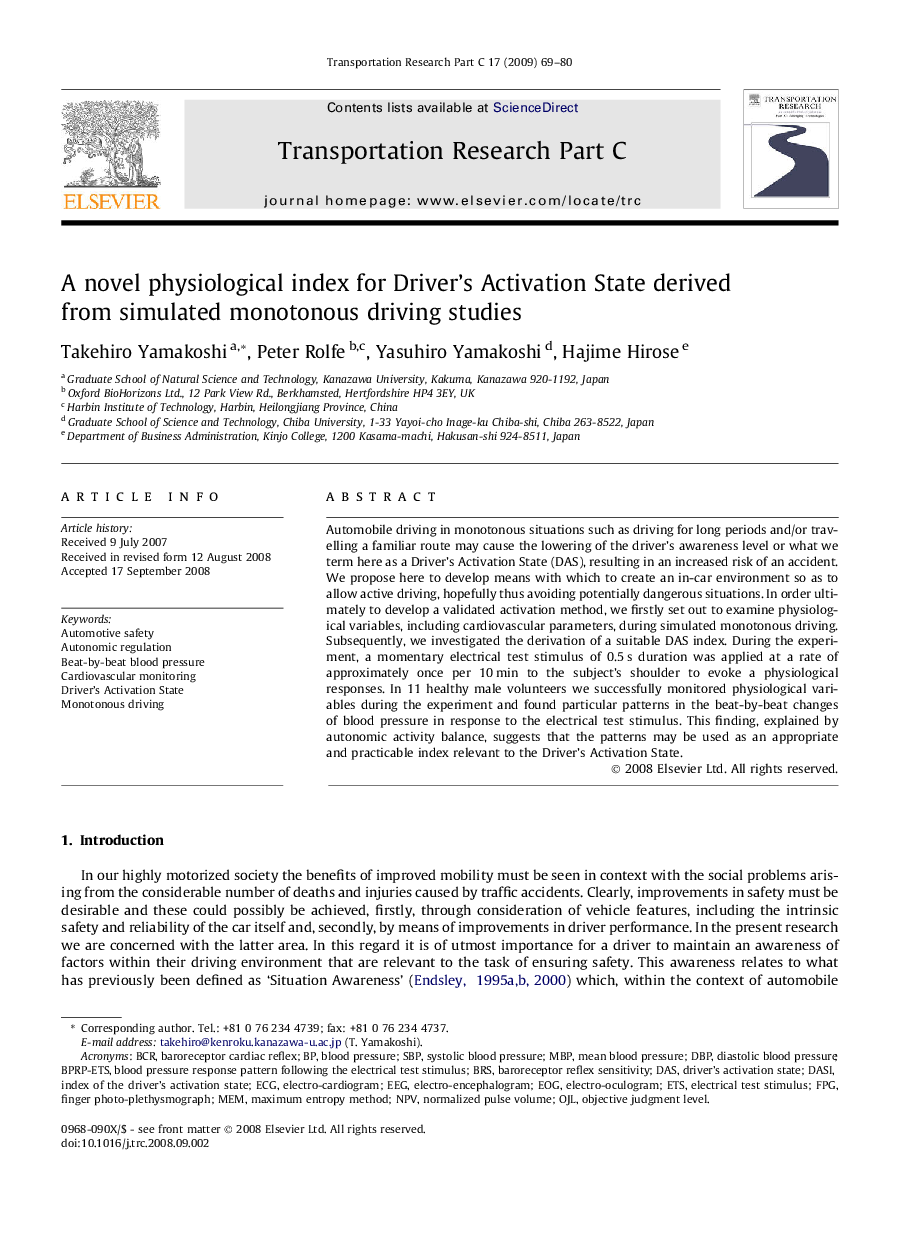| Article ID | Journal | Published Year | Pages | File Type |
|---|---|---|---|---|
| 525515 | Transportation Research Part C: Emerging Technologies | 2009 | 12 Pages |
Automobile driving in monotonous situations such as driving for long periods and/or travelling a familiar route may cause the lowering of the driver’s awareness level or what we term here as a Driver’s Activation State (DAS), resulting in an increased risk of an accident. We propose here to develop means with which to create an in-car environment so as to allow active driving, hopefully thus avoiding potentially dangerous situations. In order ultimately to develop a validated activation method, we firstly set out to examine physiological variables, including cardiovascular parameters, during simulated monotonous driving. Subsequently, we investigated the derivation of a suitable DAS index. During the experiment, a momentary electrical test stimulus of 0.5 s duration was applied at a rate of approximately once per 10 min to the subject’s shoulder to evoke a physiological responses. In 11 healthy male volunteers we successfully monitored physiological variables during the experiment and found particular patterns in the beat-by-beat changes of blood pressure in response to the electrical test stimulus. This finding, explained by autonomic activity balance, suggests that the patterns may be used as an appropriate and practicable index relevant to the Driver’s Activation State.
